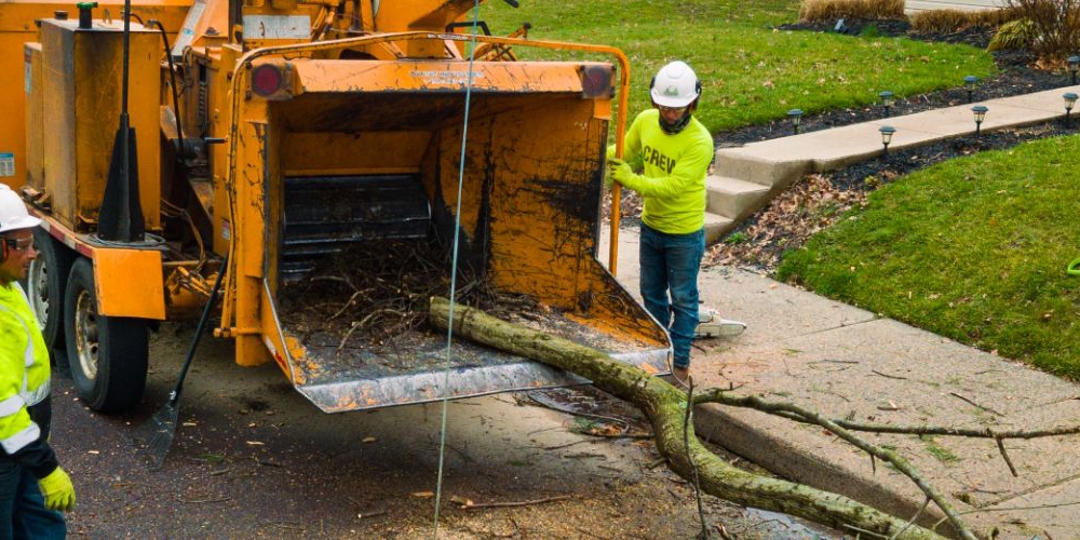In the face of increasingly frequent and severe hurricanes, the preservation of our arboreal assets has never been more critical. Understanding the multifaceted approach to preventing tree damage during such natural calamities involves not only recognizing tree vulnerability but also implementing strategic measures well in advance.
From the nuanced art of pruning and selecting species with inherent resistance to the strategic placement within landscapes, each step plays a pivotal role in safeguarding these natural giants. But how does one effectively translate these strategies into practice, ensuring the longevity and health of their trees?
The subsequent discussion aims to illuminate these methodologies, offering a detailed guide to proactive tree care in the hurricane season.
Understanding Tree Vulnerability
To effectively mitigate the risks of hurricane caused tree damage, it is essential to first comprehend the factors that contribute to tree vulnerability. Among the myriad of factors, root health and soil condition stand out as primary determinants of a tree's resilience or susceptibility to storm damage. Healthy roots anchor a tree firmly into the ground, providing stability during high winds. Conversely, compromised root systems, due to disease, damage, or inadequate development, greatly elevate the risk of uprooting. This vulnerability underscores the importance of regular assessments and care to guarantee root vigor.
Soil condition also plays a pivotal role in a tree's ability to withstand hurricane forces. Well-drained, nutrient-rich soils promote robust root growth, enhancing a tree's stability. On the other hand, compacted soils, poor nutrition, and improper water management can weaken root systems and, by extension, the overall structural integrity of the tree. Recognizing the interplay between root health and soil condition is critical in developing strategies to fortify trees against the destructive power of hurricanes, thereby minimizing the potential for damage to property and ensuring public safety.
Strategic Pruning Techniques
Understanding the root health and soil condition lays the groundwork; similarly, strategic pruning techniques serve as an important method in enhancing a tree's resilience against hurricanes. Proper pruning can greatly reduce the risk of tree failure during extreme weather conditions by removing potentially hazardous limbs and promoting a stronger, more stable structure. It's not just about cutting away branches; it involves a careful evaluation of which limbs to remove and which to preserve to promote healthy growth and wind resistance.
The timing of pruning is pivotal. Ideally, pruning should be conducted in the late winter or early spring before the hurricane season commences. This timing allows trees to recover and grow stronger in the lead-up to potentially harsh weather. However, emergency pruning may be necessary if a storm is imminent and the tree poses a clear danger.
Tool selection also plays an important role in strategic pruning. Using sharp, clean, and appropriate tools for the specific type of cut can prevent unnecessary damage to the tree. For instance, using a hand saw for larger branches and secateurs for smaller ones ensures clean cuts that heal efficiently, reducing the risk of disease and pest infestation which can further weaken the tree.
Selecting Hurricane-Resistant Trees
Selecting the right species of trees is a critical step in minimizing potential damage during hurricanes. The resilience of a tree during such catastrophic weather events largely depends on its species. Trees with strong root anchoring systems and inherent species resilience have a greatly higher chance of withstanding the forceful winds and torrential rains associated with hurricanes. Therefore, careful selection based on these characteristics is essential in safeguarding property and lives.
To enhance your landscape's resilience against hurricanes, consider the following factors when selecting trees:
Root Anchoring: Opt for species known for their deep and robust root systems. Trees with such roots are less likely to be uprooted during strong winds, providing better stability.
Species Resilience: Some species are naturally more resistant to wind damage. Researching and choosing these species can lead to a landscape capable of recovering more quickly post-hurricane.
Growth Habit and Structure: Trees with a compact, balanced growth habit and those that can be easily pruned to resist wind forces are preferable. This characteristic allows them to distribute stress more evenly, reducing the likelihood of breakage or toppling.
Proper Tree Placement and Spacing
After considering the selection of hurricane-resistant tree species, it is important to focus on their proper placement and spacing within the landscape to further minimize potential damage during hurricanes. Strategic positioning of trees can greatly reduce the risk of property damage and guarantee the safety of both residents and the trees themselves. The soil composition of the planting area plays an essential role in this regard. Trees require well-drained, fertile soil to establish strong root systems capable of withstanding high winds. Planting in areas with poor soil composition may require soil amendments to improve drainage and nutrient content.
Moreover, the impact of trees on local wildlife should not be overlooked. Proper spacing between trees can create natural corridors for wildlife, promoting biodiversity while reducing the likelihood of trees becoming windthrow hazards. Adequate spacing allows for the free movement of air and sunlight, reducing moisture retention that could weaken trees and make them more susceptible to storm damage. It also prevents overcrowding, which can lead to competition for resources, potentially weakening trees over time.
Post-Hurricane Tree Care
Once a hurricane has passed, it is important to assess and address the needs of trees in the affected landscape to secure their recovery and future resilience. The aftermath of a hurricane can leave trees in a vulnerable state, necessitating immediate and specific care to aid in their healing and to fortify them against future storms.
Key post-hurricane tree care practices include:
Soil stabilization: Hurricanes can severely disrupt the soil around trees, leaving roots exposed and weakening the tree's foundation. Effective soil stabilization techniques, such as mulching and gentle recompaction, can help secure the tree and promote root recovery.
Fungus management: The combination of broken limbs and increased moisture creates an ideal environment for fungal growth. Proactively managing fungus with appropriate fungicides and by pruning away dead or infected branches can save a tree from further damage.
Structural assessment and repair: After stabilizing the soil and managing fungus, inspect trees for structural damage. Use cabling and bracing to support weakened trees, but consult with a professional arborist to assure these interventions are done correctly.
Implementing these strategies promptly can greatly improve the chances of a tree's survival and its ability to withstand future hurricanes, contributing to a healthier, more resilient landscape.

